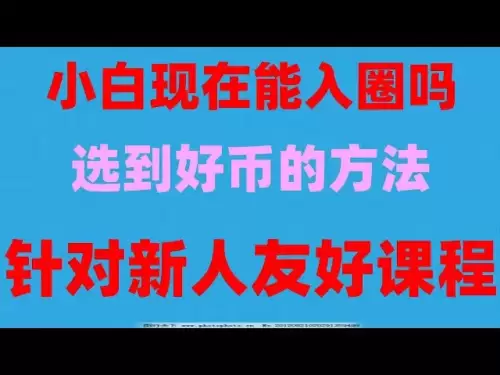-
 Bitcoin
Bitcoin $109,916.9388
2.96% -
 Ethereum
Ethereum $2,586.0057
2.22% -
 Tether USDt
Tether USDt $1.0000
-0.01% -
 XRP
XRP $2.4016
2.15% -
 BNB
BNB $675.6697
3.95% -
 Solana
Solana $174.6786
3.90% -
 USDC
USDC $0.9996
-0.02% -
 Dogecoin
Dogecoin $0.2377
5.24% -
 Cardano
Cardano $0.7764
4.43% -
 TRON
TRON $0.2693
0.17% -
 Sui
Sui $3.9523
2.51% -
 Chainlink
Chainlink $16.2637
3.75% -
 Avalanche
Avalanche $23.4612
4.16% -
 Hyperliquid
Hyperliquid $28.5975
8.49% -
 Stellar
Stellar $0.2951
2.77% -
 Shiba Inu
Shiba Inu $0.0...01501
3.13% -
 Hedera
Hedera $0.1989
2.33% -
 Bitcoin Cash
Bitcoin Cash $413.7641
5.27% -
 UNUS SED LEO
UNUS SED LEO $8.8669
1.04% -
 Toncoin
Toncoin $3.1204
1.74% -
 Polkadot
Polkadot $4.7879
2.21% -
 Litecoin
Litecoin $97.8491
3.57% -
 Monero
Monero $392.4796
11.86% -
 Bitget Token
Bitget Token $5.2437
1.65% -
 Pi
Pi $0.8416
11.10% -
 Pepe
Pepe $0.0...01394
5.60% -
 Dai
Dai $0.9998
-0.01% -
 Ethena USDe
Ethena USDe $1.0004
-0.02% -
 Bittensor
Bittensor $455.2543
9.83% -
 Uniswap
Uniswap $6.3704
5.72%
Is WMA reliable in extreme market conditions? How to adjust strategies?
WMA's reliability drops in extreme market conditions; traders should use multiple time frames, combine with RSI/MACD, adjust WMA periods, and set stop-loss orders.
May 21, 2025 at 11:08 pm
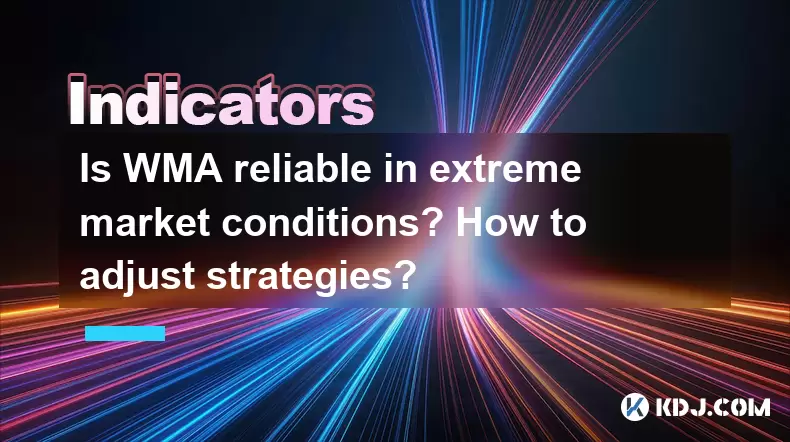
Is WMA Reliable in Extreme Market Conditions? How to Adjust Strategies?
The Weighted Moving Average (WMA) is a popular technical analysis tool used by traders in the cryptocurrency market to smooth out price data and identify trends. However, its reliability in extreme market conditions is often questioned. This article delves into the effectiveness of WMA in such scenarios and provides guidance on how to adjust trading strategies accordingly.
Understanding WMA and Its Functionality
Weighted Moving Average (WMA) is a type of moving average that assigns more weight to recent data points, making it more responsive to new information than a simple moving average. The formula for WMA is as follows:
[ \text{WMA} = \frac{n \times Pn + (n-1) \times P{n-1} + ... + 2 \times P_2 + 1 \times P_1}{n + (n-1) + ... + 2 + 1} ]
Where ( n ) is the number of periods, and ( P ) is the price.
In normal market conditions, WMA can effectively help traders identify trends and potential entry or exit points. However, extreme market conditions, characterized by high volatility and rapid price movements, can challenge the reliability of WMA.
WMA's Performance in Extreme Market Conditions
In extreme market conditions, such as during significant market crashes or rapid bull runs, the WMA can be less reliable. The reason is that the weighted nature of WMA makes it more sensitive to recent price changes, which can lead to false signals if the market experiences sudden spikes or drops.
For instance, during a flash crash, the WMA might quickly drop, suggesting a bearish trend, but the market could recover just as quickly, rendering the signal misleading. Similarly, in a rapid bull run, the WMA might indicate a strong bullish trend, but the market could reverse unexpectedly, causing traders to enter positions at the peak.
Strategies to Adjust WMA in Extreme Market Conditions
To mitigate the risks associated with using WMA in extreme market conditions, traders can employ several strategies to adjust their approach.
Use Multiple Time Frames: By analyzing WMA across different time frames, traders can gain a more comprehensive view of the market. For example, a short-term WMA might show a bearish trend, but a longer-term WMA could indicate a bullish trend, helping traders make more informed decisions.
Combine with Other Indicators: Relying solely on WMA can be risky in volatile markets. Combining WMA with other technical indicators, such as the Relative Strength Index (RSI) or the Moving Average Convergence Divergence (MACD), can provide a more robust analysis. For instance, if the WMA suggests a bearish trend but the RSI indicates an oversold condition, it might be prudent to wait for a confirmation before acting.
Adjust the WMA Period: In extreme market conditions, adjusting the period of the WMA can help. A shorter period makes the WMA more responsive to recent price changes, which can be beneficial in rapidly moving markets. Conversely, a longer period can help smooth out volatility and provide a clearer trend.
Implement Stop-Loss Orders: To manage risk, traders should always use stop-loss orders. In extreme market conditions, setting wider stop-loss levels can prevent premature exits from positions due to short-term volatility.
Practical Example: Adjusting WMA in a Volatile Market
Let's consider a practical example of adjusting WMA in a volatile cryptocurrency market. Suppose you are trading Bitcoin (BTC) and the market is experiencing high volatility.
Analyze WMA on Multiple Time Frames:
- Open your trading platform and set up charts for BTC/USD on different time frames, such as 1-hour, 4-hour, and daily charts.
- Calculate the WMA for each time frame. For instance, use a 20-period WMA on the 1-hour chart, a 50-period WMA on the 4-hour chart, and a 200-period WMA on the daily chart.
- Compare the WMA trends across these time frames to identify any discrepancies or confirmations.
Combine WMA with RSI:
- Add the RSI indicator to your charts, typically set to a 14-period RSI.
- If the WMA on the 1-hour chart indicates a bearish trend but the RSI is below 30, indicating an oversold condition, it might be wise to wait for the RSI to rise above 30 before considering a short position.
Adjust the WMA Period:
- If the market is extremely volatile, consider using a shorter WMA period, such as a 10-period WMA on the 1-hour chart, to be more responsive to recent price changes.
- Conversely, if the market is showing erratic movements, a longer WMA period, such as a 100-period WMA on the daily chart, might provide a clearer trend.
Set Stop-Loss Orders:
- When entering a trade based on WMA signals, set a stop-loss order. For instance, if you enter a long position on BTC/USD at $50,000 based on a bullish WMA signal, set a stop-loss order at $48,000 to limit potential losses.
- In highly volatile conditions, consider setting a wider stop-loss, such as at $47,000, to account for larger price swings.
Monitoring and Adapting to Market Changes
In extreme market conditions, it is crucial to continuously monitor and adapt your trading strategy. This involves regularly reviewing the WMA and other indicators to ensure they align with the current market dynamics.
- Regularly Review WMA Trends: Check the WMA trends across different time frames at least once per trading session. Adjust your strategy if the WMA signals change significantly.
- Stay Informed About Market News: Keep an eye on news and events that could impact the cryptocurrency market, such as regulatory announcements or macroeconomic reports. These can cause sudden shifts in market sentiment and affect the reliability of WMA.
- Be Prepared to Exit Positions: In highly volatile markets, be ready to exit positions quickly if the WMA signals reverse or if other indicators suggest a change in trend.
FAQs
Q1: Can WMA be used effectively in all market conditions?
A1: While WMA can be useful in identifying trends in normal market conditions, its effectiveness diminishes in extreme market conditions due to its sensitivity to recent price changes. Traders should combine WMA with other indicators and adjust their strategies to account for increased volatility.
Q2: How can I determine the best WMA period for my trading strategy?
A2: The best WMA period depends on your trading style and the market conditions. Short-term traders might prefer a shorter period, such as 10 to 20 periods, to be more responsive to price changes. Long-term traders might opt for a longer period, such as 50 to 200 periods, to smooth out volatility and identify broader trends.
Q3: What are the risks of relying solely on WMA for trading decisions?
A3: Relying solely on WMA can lead to false signals, especially in volatile markets. WMA does not account for market sentiment or external factors that can impact prices. Traders should use WMA in conjunction with other indicators and fundamental analysis to make more informed decisions.
Q4: How can I use WMA to identify potential reversal points in the market?
A4: To identify potential reversal points using WMA, look for crossovers between short-term and long-term WMAs. For example, if a short-term WMA (e.g., 10-period) crosses above a long-term WMA (e.g., 50-period), it might indicate a bullish reversal. Conversely, if the short-term WMA crosses below the long-term WMA, it could signal a bearish reversal. Always confirm these signals with other indicators for higher reliability.
Disclaimer:info@kdj.com
The information provided is not trading advice. kdj.com does not assume any responsibility for any investments made based on the information provided in this article. Cryptocurrencies are highly volatile and it is highly recommended that you invest with caution after thorough research!
If you believe that the content used on this website infringes your copyright, please contact us immediately (info@kdj.com) and we will delete it promptly.
- Sui Price Prediction: Riding the Wave of Growing Adoption
- 2025-05-22 09:10:13
- Ethereum (ETH) Supply on Exchanges Hits All-Time Low—A Bullish Signal?
- 2025-05-22 09:10:13
- Ethereum (ETH) Could Reach $11,340 If Bitcoin Rallies Past $378K
- 2025-05-22 09:05:13
- Canary Capital Updates S-1 Registration for Its Proposed Spot Solana ETF, Renaming It the 'Canary Marinade Solana ETF'
- 2025-05-22 09:05:13
- Bitcoin (BTC) Has Officially Shattered Records, Reaching an All-Time High of $109,721
- 2025-05-22 09:00:13
- A Sudden Wave of Regulatory Clarity and Technological Breakthroughs Has Sent Ripples Across Global Cryptocurrency Markets
- 2025-05-22 09:00:13
Related knowledge
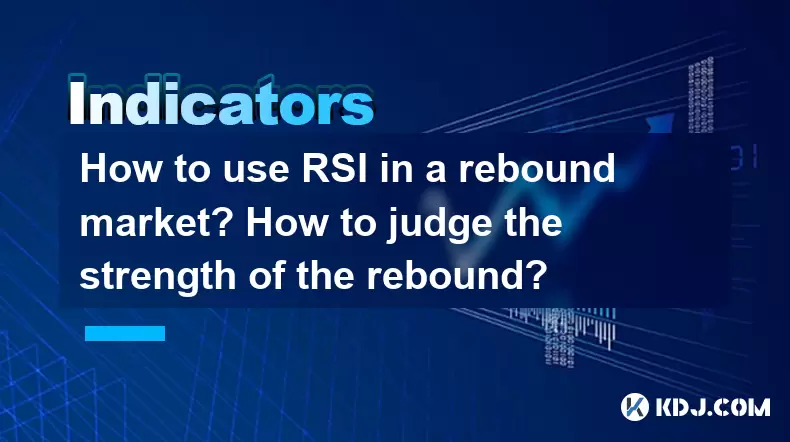
How to use RSI in a rebound market? How to judge the strength of the rebound?
May 22,2025 at 08:07am
The Relative Strength Index (RSI) is a momentum oscillator that measures the speed and change of price movements. It is widely used in the cryptocurrency market to identify overbought or oversold conditions, which can be particularly useful in a rebound market. In this article, we will explore how to effectively use the RSI in a rebound market and how t...
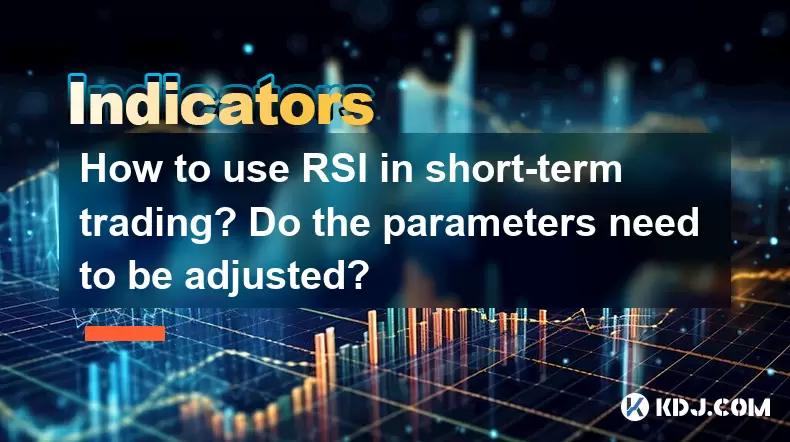
How to use RSI in short-term trading? Do the parameters need to be adjusted?
May 22,2025 at 07:07am
In the world of cryptocurrency trading, the Relative Strength Index (RSI) is a popular technical indicator used by many traders to make informed decisions. RSI is particularly useful in short-term trading as it helps identify potential reversal points in the market. This article will delve into how to use RSI effectively in short-term trading and whethe...
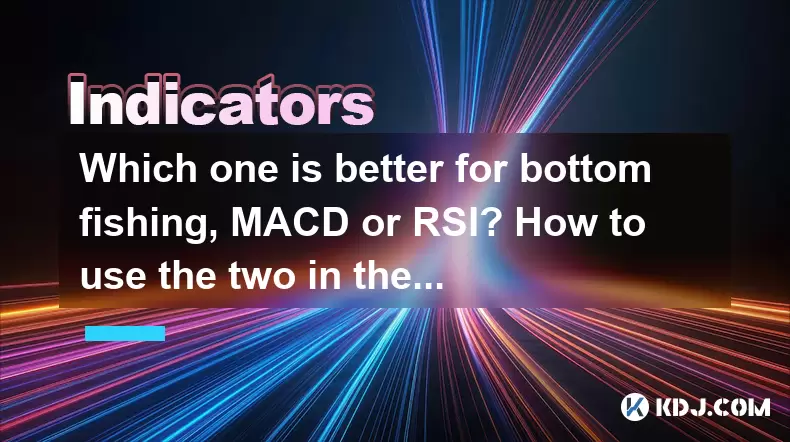
Which one is better for bottom fishing, MACD or RSI? How to use the two in the bottom area?
May 22,2025 at 06:36am
In the realm of cryptocurrency trading, bottom fishing refers to the strategy of buying assets that are believed to be undervalued with the expectation that their prices will rebound. Two popular technical indicators used for this purpose are the Moving Average Convergence Divergence (MACD) and the Relative Strength Index (RSI). Each of these tools offe...
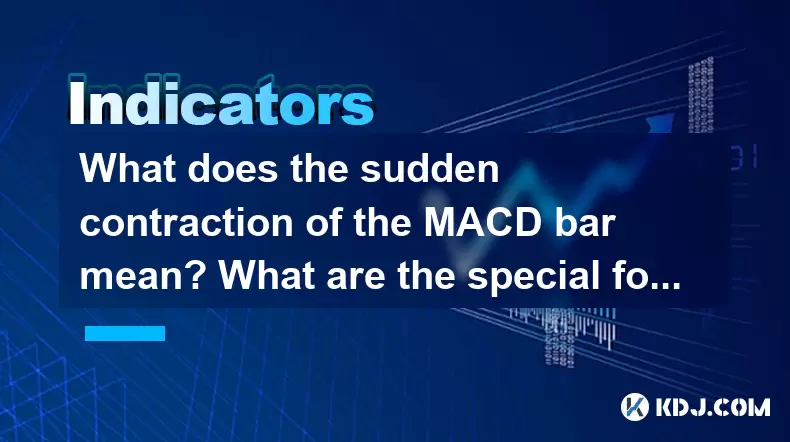
What does the sudden contraction of the MACD bar mean? What are the special forms when the main force controls the market?
May 22,2025 at 05:42am
The Moving Average Convergence Divergence (MACD) is a trend-following momentum indicator that shows the relationship between two moving averages of a security’s price. A sudden contraction of the MACD bar can signal important changes in market dynamics, often hinting at potential shifts in price momentum. Understanding these signals, along with the spec...
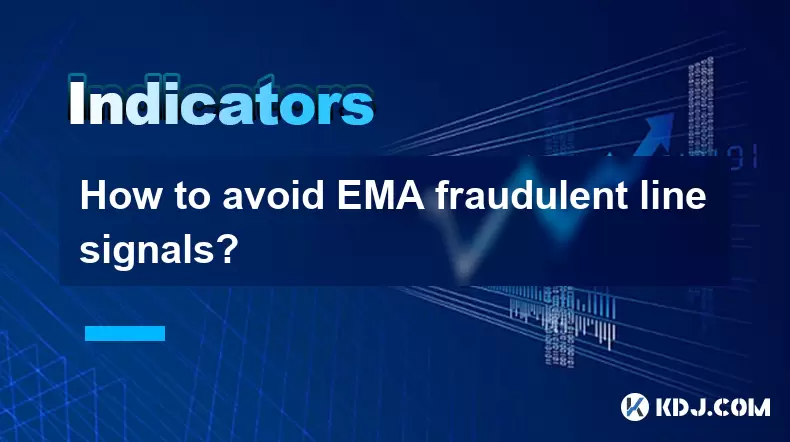
How to avoid EMA fraudulent line signals?
May 22,2025 at 08:42am
How to Avoid EMA Fraudulent Line Signals? In the world of cryptocurrency trading, the Exponential Moving Average (EMA) is a popular technical indicator used to identify trends and potential entry or exit points. However, traders often encounter fraudulent EMA line signals that can lead to significant financial losses. This article will explore strategie...
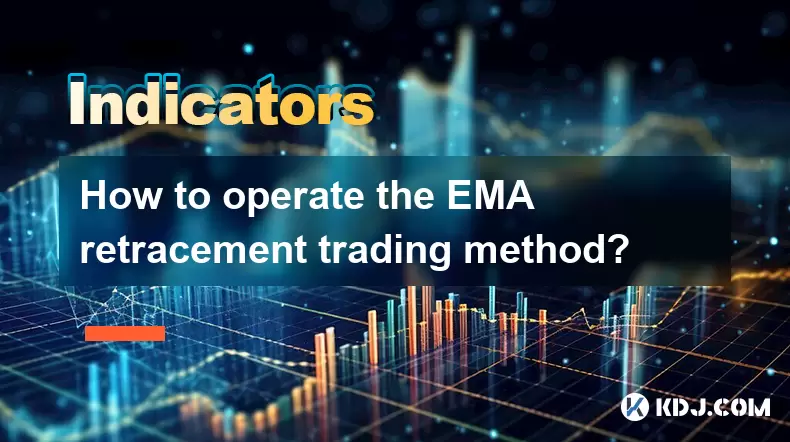
How to operate the EMA retracement trading method?
May 22,2025 at 04:35am
Introduction to EMA Retracement TradingThe EMA retracement trading method is a popular strategy among cryptocurrency traders that combines the use of Exponential Moving Averages (EMAs) with the concept of price retracements. This method helps traders identify potential entry and exit points by observing how price movements interact with different EMAs. ...

How to use RSI in a rebound market? How to judge the strength of the rebound?
May 22,2025 at 08:07am
The Relative Strength Index (RSI) is a momentum oscillator that measures the speed and change of price movements. It is widely used in the cryptocurrency market to identify overbought or oversold conditions, which can be particularly useful in a rebound market. In this article, we will explore how to effectively use the RSI in a rebound market and how t...

How to use RSI in short-term trading? Do the parameters need to be adjusted?
May 22,2025 at 07:07am
In the world of cryptocurrency trading, the Relative Strength Index (RSI) is a popular technical indicator used by many traders to make informed decisions. RSI is particularly useful in short-term trading as it helps identify potential reversal points in the market. This article will delve into how to use RSI effectively in short-term trading and whethe...

Which one is better for bottom fishing, MACD or RSI? How to use the two in the bottom area?
May 22,2025 at 06:36am
In the realm of cryptocurrency trading, bottom fishing refers to the strategy of buying assets that are believed to be undervalued with the expectation that their prices will rebound. Two popular technical indicators used for this purpose are the Moving Average Convergence Divergence (MACD) and the Relative Strength Index (RSI). Each of these tools offe...

What does the sudden contraction of the MACD bar mean? What are the special forms when the main force controls the market?
May 22,2025 at 05:42am
The Moving Average Convergence Divergence (MACD) is a trend-following momentum indicator that shows the relationship between two moving averages of a security’s price. A sudden contraction of the MACD bar can signal important changes in market dynamics, often hinting at potential shifts in price momentum. Understanding these signals, along with the spec...

How to avoid EMA fraudulent line signals?
May 22,2025 at 08:42am
How to Avoid EMA Fraudulent Line Signals? In the world of cryptocurrency trading, the Exponential Moving Average (EMA) is a popular technical indicator used to identify trends and potential entry or exit points. However, traders often encounter fraudulent EMA line signals that can lead to significant financial losses. This article will explore strategie...

How to operate the EMA retracement trading method?
May 22,2025 at 04:35am
Introduction to EMA Retracement TradingThe EMA retracement trading method is a popular strategy among cryptocurrency traders that combines the use of Exponential Moving Averages (EMAs) with the concept of price retracements. This method helps traders identify potential entry and exit points by observing how price movements interact with different EMAs. ...
See all articles






















